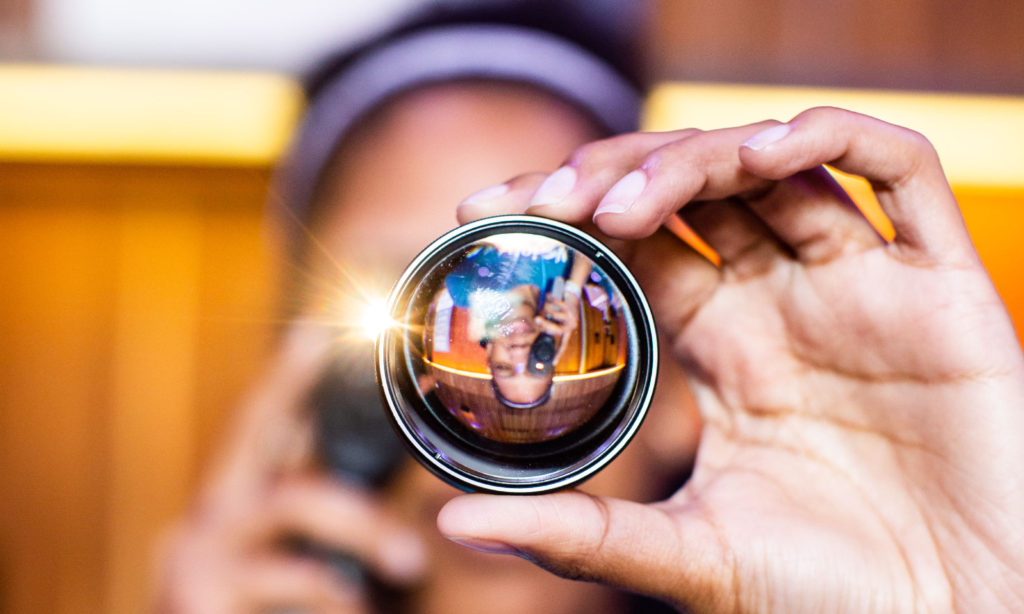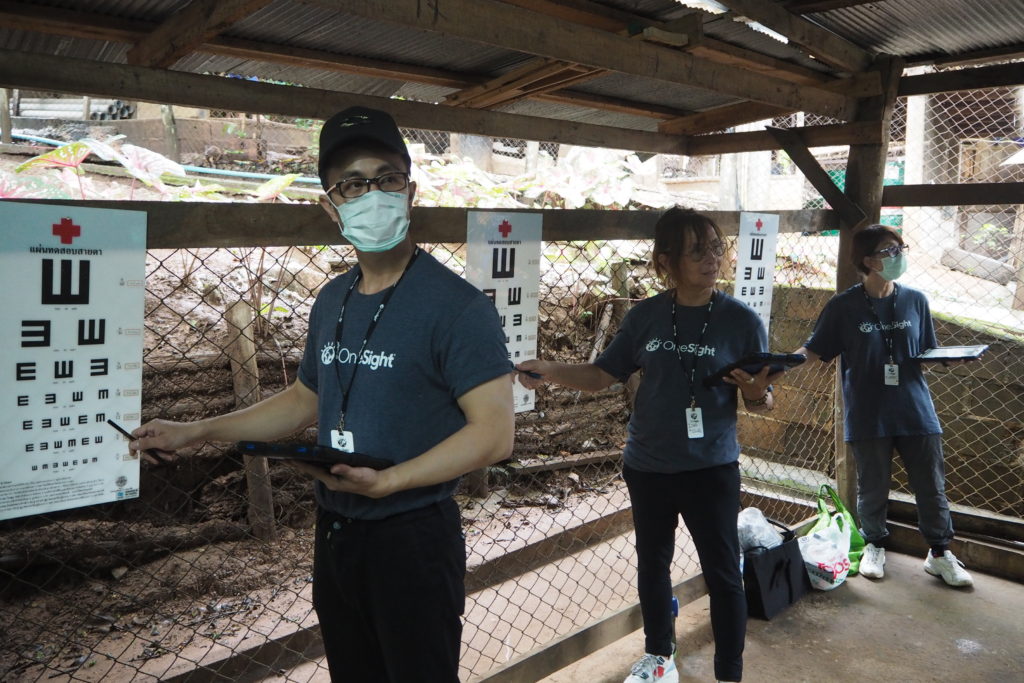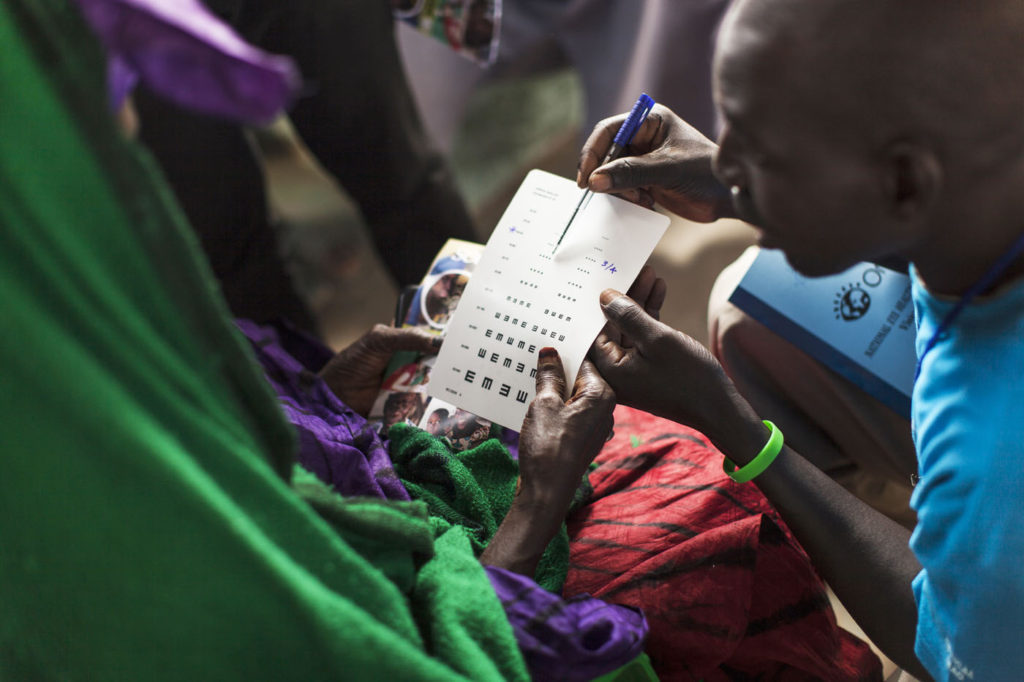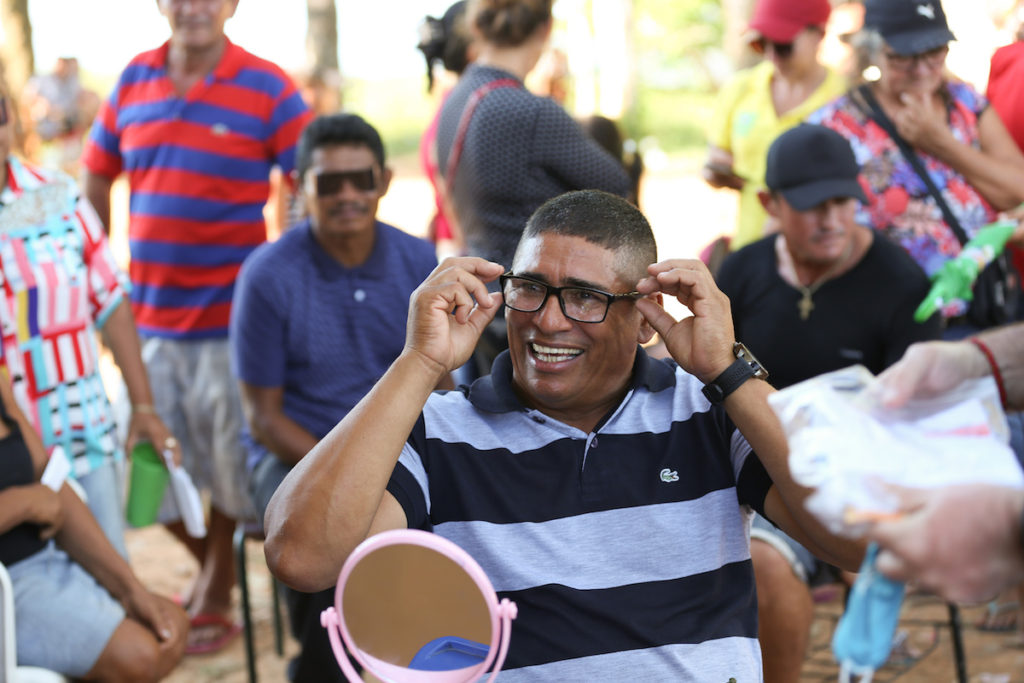
At OneSight, we believe that glasses have the ability to unlock potential. But at the very root of our mission to “help the world see” lies a dedication to provide people with vision care access, which stretches far beyond a pair of glasses.
There are 1.1 billion people in this world who need access
to vision care but don’t have it.
And we’ve got a plan to bring it to them, together. The vision care gap is a problem with big needs and an equally big solution. Or set of solutions. And that’s exactly what we and many partner organizations, governments, NGOs and nonprofits are putting in place. What’s needed is a scalable, flexible approach that puts long-term systems in place where the population can support them, and more targeted, short-term solutions to help out when the infrastructure is not available yet. This need has driven OneSight to utilize two different programming approaches to provide those in need with access.

CHARITABLE CLINICS
Our charitable clinics bring free eye exams and glasses to communities that have no access to them due to economic or geographic challenges. That means we can be serving people in both densely populated cities as well as very remote communities. Every location presents its own set of unique challenges, demanding us to consider new approaches to how we traditionally run our charitable clinics. Through a mixture of innovative approaches and technology, we’ve been able to give access to over 20 million people from all over the world through our charitable work in the last 30 years. This clinic approach focuses on giving access to vulnerable and underserved populations in the United States and all over the world. From the Amazon River Basin, to inner-city school children in Chicago, to Syrian refugees seeking shelter in Jordan – there will always be a need to help in a more targeted way. That’s why when we hold a charitable clinic, we often also seek out opportunities for permanent solutions.

SUSTAINABLE VISION CENTERS
Unlike our charitable clinics, our Sustainable Vision Centers, aim to provide permanent vision care access to communities in need. Each of our centers provides both physical and affordable vision care access to the surrounding community, ensuring that those that need screenings or prescriptions can get them. From start to finish, we partner with the local government and organizations to open the centers and train community members to run them.
The key is not to create dependence on us or any other organization. Our goal is to help build the infrastructure, support and train staff, and build awareness of the available vision care services for the population. Once the system is up and running, move out of the way. Since our first center in 2013, we’ve opened up 129 centers worldwide.

CHARITABLE TO SUSTAINABLE PATHWAYS
The Vision Care Gap was once called “the biggest health crisis you’ve never heard of,” by the NY Times. At OneSight, we know that the way to solve this crisis lies in creating permanent, self-sustaining ways to bring access to entire communities. Our charitable clinics are often the first step towards sustainable solutions because they allow us to assess the feasibility and functionality of providing permanent access. If we find that an area has the infrastructure, support and logistical means for a permanent center, we work with the government and many of the same partners that fuel our charitable work to develop a solution. And in some cases, we work with governments and partner organizations to enter new areas all together.
Laying the groundwork for a vision care center in a new area can be time-consuming and daunting, which is why over time we’ve developed an adaptable model that allows us to scale our solutions to meet a country’s unique set of needs. Since our first vision care center opened in 2013, we’ve opened up 129 more across 10 countries. Our first launched in The Gambia, whose entire population now has permanent access. Since then, we’ve worked with larger countries such as Rwanda, Zambia, South Africa, and China to create similar models. And we’re far from done. We have our eyes set on opening up more vision centers in 2019 and will hopefully be expanding our work into a handful of new countries in 2020.
This is an exciting time. While the world faces many endemic and pernicious challenges, the Vision Care Gap doesn’t have to be one of them —we have the tools to close it. It’s a problem that requires new ways of thinking and partnerships across a spectrum of private and public sectors. And at OneSight we are always looking for those who want to help us change the world, one person at a time.
We have the solution.
Actually, we have two solutions. One is permanent. The other meets urgent needs. And both have been helping people see better and live better from your backyard, all the way to the other side of the world. Explore our solutions.